Ampeg rewrote the book on high power amplification in 1969 with the introduction of the SVT. That was the Super Valve Technology amp which pumped out, a then unheard of, massive 300 watts from six huge valves (or “tubes”). Marshall invented THE rock guitar amp and Ampeg followed it with THE rock bass amp. And then… through the ’70s and ’80s, they never topped the SVT. Sure, they had a few other good products, in-between changing ownership as numerously as Michael Jackson was changing his nose. So in the late eighties, they just started throwing the SVT name around like baby batter at a bukkake convention. And hence, the SVT-200T, produced from 1987-1994: featuring no valves at all.
I like to think I’m less dumb than I used to be. When I bought this SVT-200T solid-state amplifier, I thought I had an SVT. It was loud, the right shape, it said SVT… shit, I just played grind core, what did I know? It had that “Ampeg” tone they dial all their amps towards and it sounded awesome. Sounded. One night in 2005 it took a dump. Or maybe I took a dump. Did I have the wrong speaker set up? Was the club’s power screwy? Was it just old? It took me a lot of learning over seven years, but I finally got this tubeless, sad sack out of the closet and farting again.
When I first tried to get this amp fixed, I called around to a mess of techs. It was refused. I was literally told by one, “That’s on the short list of amps I refuse to work on.” It’s a solid-state amp and a pain in the ass to work on. If tubes amp are an Apple II, solid state amps are a Macintosh… an SE, not an iMac or anything. That comparison would be ludicrous, largely because I’d never play an amp that ever came in blueberry.
In all likelihood, any amp tech would’ve just tried to replace the entire power amp or pre amp section with new, already populated PCBs from Ampeg. That’s what happened the first time I took this in for a service. Testing all those tiny components is time consuming and would cost me more for their hourly wage than to throw half the amp out. And that’s why this time I did it myself, because I’m an environmentalist (and I’m poor).
Safety first: like any amp, working on one can kill you. Before it’s opened up, you need to make sure the electricity stored in it is discharged. Some are designed to do this, some not. Luckily, the SVT-200T does discharge itself and rather quickly in about 20-30 seconds. I tested it along the 69 volt power rails coming from the bridge rectifier and to ground using my multimeter until it read zero.
I made a visual check. When this amp fried, it made a popping noise and the tragic smell of a baby burning emanated from the insides. I like a good barbecue, but it’s never good when it happens indoors.
R28, R29, and the T-90 power relay were done for. I sourced the resistors locally and ordered the relay from Mouser Electronics. The relay plopped right in. For the resistors, I scraped away as much carbon residue from the toasted ones as I could and carefully taped electrical tape over the PCB wound. Carbon residue from something blowing up can conduct electricity and needs to be cleared for new parts.
I got the part specs off a schematic I secured from LOUD Technologies, the current owner of Ampeg. I had to electronically sign a waiver that if I worked on the amp, I could die, and I wouldn’t blame them. Heady shit. Instead of me dying, though, I was making my amp better.
But I wasn’t finished. Not by a long shot. I fired up the amp, the relay clicked, and… nothing. No sound. And this is why most techs won’t take on this amp. Diagnosing the myriad problems was less about what had broken, and more about what was even working?
I ran a signal out of the pre-amp to another amp. This section was working great, and thank goodness, because I didn’t relish unscrewing every knob and every pot to get the PCB out. When I ran another amp into the SVT-200T’s power amp section, I got nothing. Whatever fried those components was sure to have done some other damage, I thought.
I took out the board, I tested the transistors, power transistors, and I went through all the test points indicated in the schematic. Some people on the www.ssguitar.com forum thought it might be the ICs, so I tried swapping the NE5532s for TL072s after I installed some IC sockets for ease of exchange.
Nothing. Long story short, I couldn’t come up with anything that would fix the problem.
Then one forum member suggested I run a 50Hz sine wave into the power amp via an iPod. The headphone out of an iPod gives you just enough signal to make this possible. I thought it was pointless, but when I cranked the amp, I could just hear the tiniest squeal coming out of the speaker. Interesting!
I started probing with my multimeter again while the sine wave was playing to test for voltages. I tested the tip contact on the PCB mounted Cliff jack and slipped a little. The probe made contact on the switching jack between the tines and all of a sudden I heard a loud noise! Are you fucking kidding me? After days and days of deliberation and asking for help online, was the problem really another old, shitty Cliff jack, just like I’d had to fix before on the Ampeg VH-140C? I’ll never know for sure, because I slipped again in my excitement and the probe made contact with the jack and the neighboring thermistor… sparks flew.
I know for sure I fried one of the ICs in my clumsiness. I replaced the shit jacks with new ones. What other damage did I do? I don’t know, because who knows how much damage was left to fix before I bunged it all up. At least I didn’t fry my iPod; that, I could never fix myself.
Desperation set in. I retested everything I’d tested before. I found one test point with way lower voltage than it had my first go round. I tested the diode there; it didn’t test right. I took it out of the circuit. It was leaking so I replaced it. And that set me off. Fucking blown diodes were the little buggers that had cause me headaches when I fixed Sean’s Peavey XXX. If this wasn’t it, then WTF. I ordered every kind of diode that was in the SVT-200T schematic. While waiting for snail mail, I tested every diode while it was in circuit.
You can’t really get a “for sure” reading off a part in circuit every time. But sometimes you do. With the multimeter in diode mode, a healthy diode will read no voltage one way, and about .5V passing the other way. By process of elimination, I weeded out what were definitely healthy diodes in my amp and marked the suspected ones. I then desoldered a leg of each suspected one and tested it out of circuit.
I found D10-13, a bunch of 1N914 diodes that regulated the voltage that regulated the transistors that regulated other transistors that regulated the voltage for the power transistors had fried. Confusing? I don’t understand it myself, but the parts were busted. They were near the original blown resistors in the circuit, so they could’ve been fried before… or maybe I did it. I replaced them. I tweaked that variable resistor just a touch to get a couple test points within tolerances indicated on the schematic and…
My amp worked. After five years of waiting dormant, then two years of my starting and giving up again fixing it, this fucker works again. And it’s LOUD, running 350 watts at 4Ω (200W at 8Ω, like in the above video). It sounds better than I remember, probably because I ran it through some pretty janky cabs way back.
Besides replacing a few missing knobs with OEM parts from www.fliptops.net, there was one last thing to do. I really didn’t like the connected cord.
I detached the cord from the spade plugs on the inside of the amp. I used a Dremel to cut a new hole for an AC socket-in which I attached with some size 4 black sheet metal screws and speed nuts.
It’s extremely simple to reattach the spade plugs to the new AC socket, so long as you remember to attach your hot and neutral wire to the right leads. The black wire is hot and should lead to the plug’s smaller tine. The white wire is neutral and should lead to the plug’s larger tine. Ground is green and… well if you don’t know where that goes, stop mucking about inside of an amplifier.
Now I can use a standard detachable AC cord, like most modern amps use.
I originally considered fixing this amp, the gods willing, and then selling it. Now, I’m not so sure. It’s got a sweet tone and loads of extras like bi-amp capability and a balanced-line out. It’s light compared to my tube amps at a mere 47 lbs. Oh, and it doesn’t look like a dopey rack-mounted amp. Plus, quite honestly, the resale value for the SVT-200T is complete and utter dog shit. Despite it being an SVT in name only, I think it’s a keeper as a great back-up to an actual SVT… you know, the one that has actual tubes.
I couldn’t find any video online of me rocking this thing back in the day. Last time this amp was working was the dark age of P.Y.T. (Pre-YouTube). Someone did upload this old video of a hooded menace rocking the SVT-200T, however. It sounds good, if you can make it past the shit talking intro.

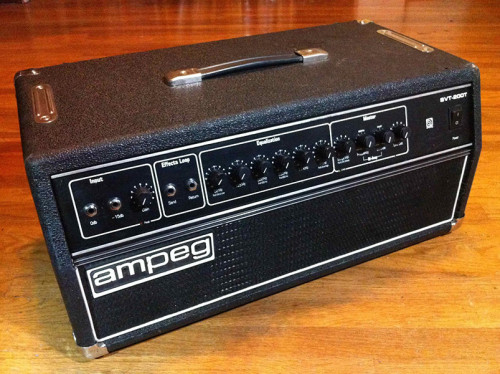
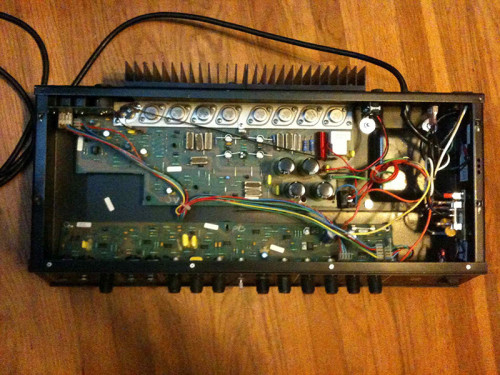
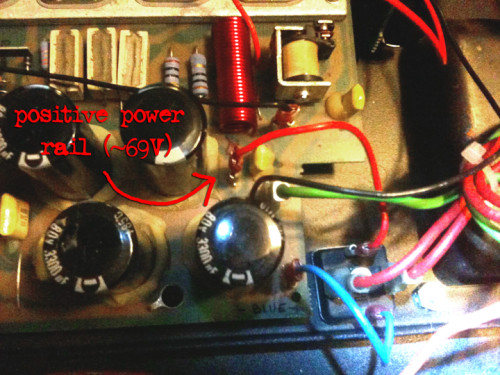
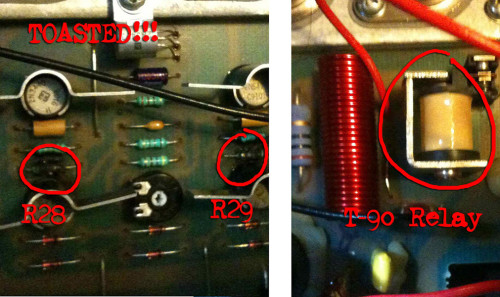
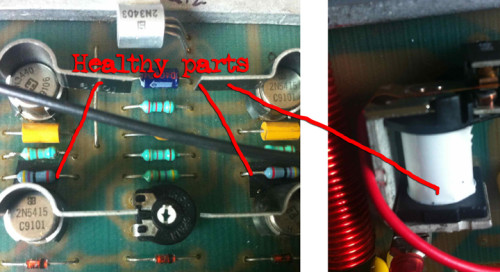
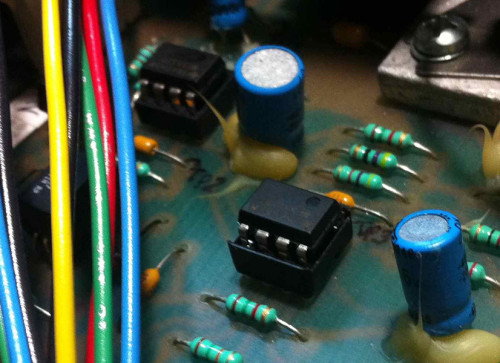
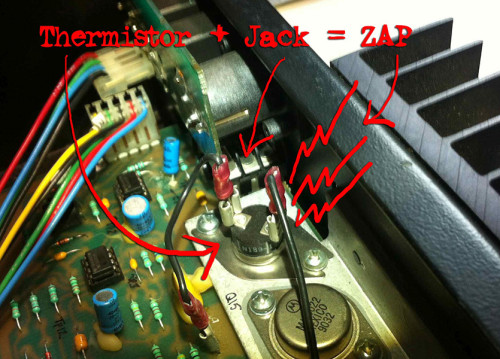
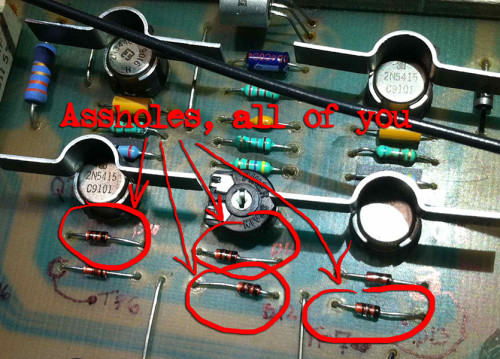
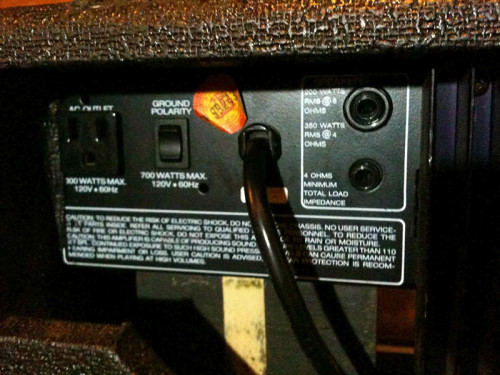

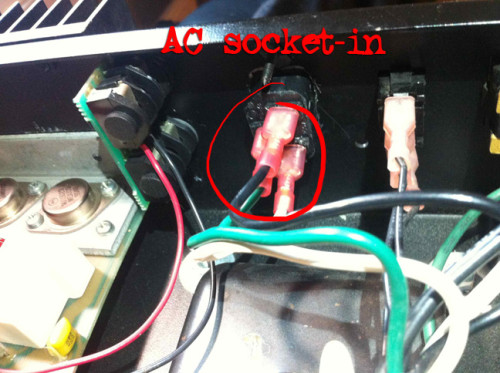
If you still have a copy of the amp schematic, I would love to have a copy. I am trying to fix a svt-200t with much reduce output. Still loud but not where it was once.
Thank You
Proceed with caution!!! Do not work on this amp unless you have experience fixing high voltage devices. It can kill you.
If you do have success, however, please come back and comment on what the problem and the solution was so you might help any other people reading this. Cheers!
I have the same amp, which has some problems in Power amp section. Already, for example, I do not have the 69V you talk about I really need to have the schematic to make further progress.
Could you help me out and send me the Schematic, I have not been able to find it anywhere.
Thanks,
Grant
Can do, good sir, and good luck… it’s a bear of an amp to fix!
Hi there
Would love a copy of the schematic please sir.
Thanks in advance
Dave
Check your email…
Hello there, I would also like a copy of the schematic. I’m in the same situation you were and have a 200t with an crackling output problem. Thank you very much.
Keith
Hi, great info you got here! I’m repairing one too, but no luck finding the schematic. Much appreciated if you could please email it to me, thanks in advance!
Hi
Can you give schematic of svt200t please , my problem is a low distortion of 125hz frequency …
Mail: stef72lemarchand@gmail.com
Thanks of France.
Thank you so much for this write up! I am. about to pick up a blown SVT200T and need the schematic. The previous owner says the line out works, but not the power amp section, yay! 🙂 I’ve worked on mamy tube amps and one other Ampeg transistor amp (B200R), so this “SVT” will be exciting.
Good luck! It’s a monster.
Here’s a link to the schematic from a forum. Delete this comment if this isn’t allowed:
http://music-electronics-forum.com/attachments/11724d1290387655-svt200t.pdf
Does anyone want to work on mine for me?